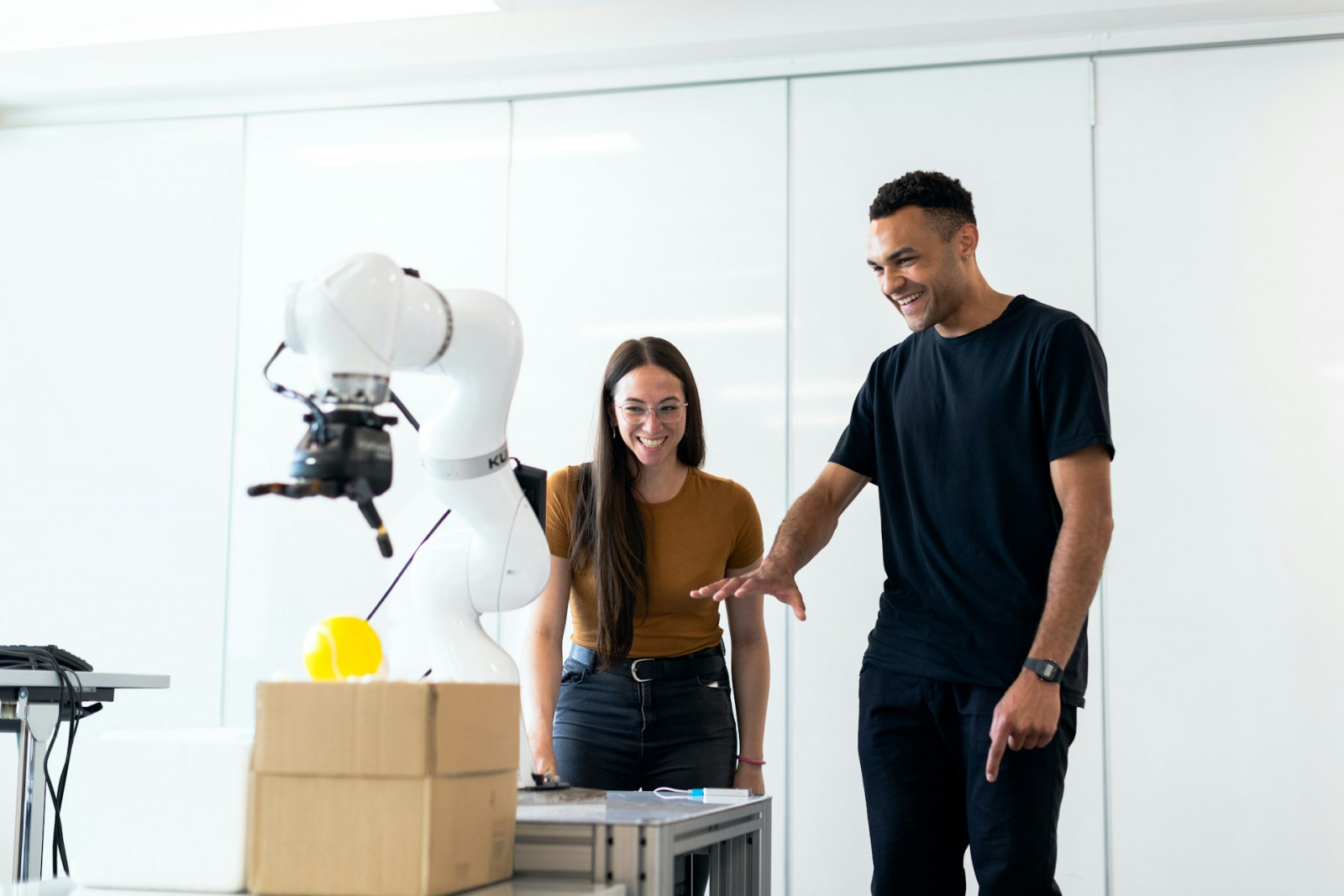What are the Most Popular Uses for Robots in Manufacturing?

The cohesive relationship between humans and robots reshapes industries and revolutionizes production processes. Whether it's optimizing production lines, ensuring quality control or venturing into collaborative efforts with human operators, the multifaceted roles of robots in manufacturing contribute to a shift in goods production. Here are some popular uses of these famous machines in modern manufacturing.
Automated Assembly
Robots excel in assembling intricate components, such as those in electronics and automobiles. They enhance precision and speed up production.
In automotive manufacturing, robots efficiently assemble car parts, ensuring high consistency and accuracy. Their arms are programmed to fit components precisely, reducing human error and increasing productivity.
Delivery and Transportation
Transportation robots are equipped with sensors and cameras are used for various delivery tasks. They navigate streets, sidewalks or controlled environments, delivering restaurant food orders to customers' doorsteps.
E-commerce companies deploy package-delivery machines to bring packages directly to customers. Additionally, mail- and supply-delivery bots are used in office buildings and hospitals to transport documents, supplies, and medical equipment to different departments, saving time for employees.
Material Handling
Efficiently moving materials is crucial in manufacturing and robots are adept at lifting heavy loads while reducing the risk of injuries. Warehouses and distribution centers benefit significantly from machines that automate handling tasks. These machines can quickly move heavy pallets of products, reducing the risk of back injuries for human workers and speeding up the distribution process.
Welding and Metal Work
Robots are experts in welding and handling metal in industries like shipbuilding, performing challenging and risky tasks precisely, and verifying product quality. They work in challenging environments such as extreme temperatures, ensuring welded joints are reliable to enhance product durability and contribute to safety.

Collaborative Robots (Cobots)
Cobots work alongside humans safely and efficiently, simplifying teamwork. In industries like health care, they can handle tasks such as disinfection, allowing workers to focus on patient care. Their ability to work collaboratively with humans in sensitive environments demonstrates their potential to enhance various industries while maintaining safety and productivity.
Quality Control
Robots with sensors and cameras inspect products, spotting even the most minor defects and ensuring top-quality products. The food industry uses cameras and sensors to find irregularities such as missing labels or damaged packaging. This assures only items meeting the highest standards reach the market.
Packaging and Stacking
These machines have transformed packaging and stacking by neatly organizing items for easier shipping. In e-commerce warehouses, they use algorithms to determine the best way to pack items efficiently while minimizing wasted space in shipping boxes. This automation speeds up the order fulfillment process and reduces packaging waste.
Painting and Coating
Robots showcase their painting and coating skills in sectors like automotive manufacturing, delivering flawless finishes. In car manufacturing, they spray nozzles and apply paint evenly to the vehicle's surface, ensuring a perfect finish. This enhances the vehicle's visual appeal, and protects it from corrosion and environmental damage.
Inspection and Testing
These machines are like quality inspectors, conducting tests at different stages to ensure product excellence. In the electronics industry, they are responsible for testing and inspecting printed circuit boards. They use advanced imaging systems to identify faults or defects, ensuring only functional components are used in electronic devices.
Robot Machining
In industries like aerospace, robots take on precise tasks such as cutting and drilling with incredible accuracy. Aerospace manufacturing relies on them for functions like machining aircraft components. They can create intricate and complex shapes, critical for the aerodynamics and safety of aircraft. The accuracy and repeatability of them ensure every component meets stringent quality standards.
The Impact of Robots in Manufacturing
The introduction of robots in manufacturing has led to significant advancements, including:
- Enhanced efficiency: They work continuously, accelerating production and minimizing downtime. For example, they assemble devices like smartphones in the consumer electronics industry, increasing production speed and efficiency.
- Improved Safety: They handle dangerous tasks, safeguarding human workers. In mining, they are employed to explore and operate in hazardous underground environments, reducing the risk to miners while increasing mineral extraction.
- Enhanced Quality: In pharmaceutical manufacturing, they fill and label medication containers, guaranteeing exact dosages and quality control.
- Cost Savings: Over time, it reduces labor costs and boosts productivity. Agriculture uses them for tasks like harvesting crops, reducing the need for manual labor and increasing farm efficiency.
- Versatility: In the textile industry, they are used for fabric cutting and sewing, enabling the production of a wide range of clothing styles with high precision.
- Eco-friendliness: They contribute to waste reduction and decreased energy consumption, making manufacturing more environmentally friendly. In the renewable energy sector, they are used to maintain wind turbines, ensuring their optimal performance and reducing the environmental impact of energy generation.
Benefits to Businesses
Robots offer numerous benefits to businesses, enhancing efficiency, productivity and competitiveness. Here are some key advantages of incorporating these machines into various industries:
- 24/7 operations: They can work non-stop, enabling businesses to operate around the clock which is particularly advantageous in industries with high demand or tight production schedules.
- Data collection and analysis: Some can collect data during operations, providing valuable insights for process optimization and decision-making.
- Remote operation: Some can be operated remotely, allowing businesses to control operations from a distance and providing flexibility and resilience.
- Innovation and R&D: They can be used for research and development, accelerating innovation and prototyping in various industries.
- Optimized processes: They can streamline and automate various processes, reducing bottlenecks and inefficiencies in production and logistics.
The Many Exciting Uses for Robots in Manufacturing
Robots in manufacturing are intriguing and transformational. They have become indispensable in modern industry, revolutionizing the production of goods. The world of robots offers endless opportunities for learning and innovation.
Thanks for helping to keep our community civil!
This post is an advertisement, or vandalism. It is not useful or relevant to the current topic.
You flagged this as spam. Undo flag.Flag Post


